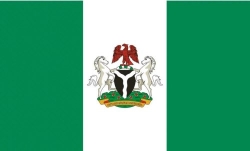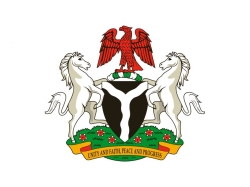
Imo State, located in the southeastern region of Nigeria, is one of the nation’s most economically vibrant and culturally rich states. Created on February 3, 1976, from the former East Central State, Imo is known for its industrious people, lush vegetation, historic landmarks, and a fast-growing urban economy centered around Owerri, the state capital.
Imo State plays a pivotal role in Nigeria’s political, educational, and cultural evolution. The state is divided into 27 Local Government Areas (LGAs), which function as the backbone of governance and grassroots development. These LGAs are central to administering public services, executing local projects, and preserving the state’s cultural diversity.
In this article, we present a full list of all 27 LGAs in Imo State, along with detailed insights into each, including headquarters, major towns, economic significance, and unique features.
Quick Facts About Imo State
-
Capital: Owerri
-
Slogan: “Eastern Heartland”
-
Date Created: February 3, 1976
-
Number of LGAs: 27
-
Region: South-East Nigeria
-
Major Ethnic Group: Igbo
-
Major Languages: Igbo, English
-
Main Economic Activities: Agriculture, trade, education, oil & gas
-
Border States: Abia, Anambra, Rivers, and Delta
Full List of Local Government Areas in Imo State
Here is a comprehensive list of the 27 LGAs in Imo State and their administrative headquarters:
| S/N | LGA Name | Headquarters |
|---|---|---|
| 1 | Aboh Mbaise | Aboh |
| 2 | Ahiazu Mbaise | Ahiara |
| 3 | Ehime Mbano | Umuezeala |
| 4 | Ezinihitte Mbaise | Itu |
| 5 | Ideato North | Urualla |
| 6 | Ideato South | Dikenafai |
| 7 | Ihitte/Uboma | Isinweke |
| 8 | Ikeduru | Iho |
| 9 | Isiala Mbano | Umuelemai |
| 10 | Isu | Umundugba |
| 11 | Mbaitoli | Nwaorieubi |
| 12 | Ngor Okpala | Umuneke Ngor |
| 13 | Njaba | Nnenasa |
| 14 | Nkwerre | Nkwerre |
| 15 | Nwangele | Amaigbo |
| 16 | Obowo | Otoko |
| 17 | Oguta | Oguta |
| 18 | Ohaji/Egbema | Mmahu-Egbema |
| 19 | Okigwe | Okigwe |
| 20 | Onuimo | Okwe |
| 21 | Orlu | Orlu |
| 22 | Orsu | Awo-Idemili |
| 23 | Oru East | Omuma |
| 24 | Oru West | Mgbidi |
| 25 | Owerri Municipal | Owerri |
| 26 | Owerri North | Orie Uratta |
| 27 | Owerri West | Umuguma |
Detailed Overview of Each LGA in Imo State
Below is a detailed look at each of the 27 LGAs in Imo State:
1. Aboh Mbaise
-
Headquarters: Aboh
-
Major Towns: Nguru, Obohia
-
Economy: Palm produce, yams, cassava
-
Cultural Significance: Strong Igbo traditional presence
2. Ahiazu Mbaise
-
Headquarters: Ahiara
-
Known for: High population density and educational institutions
-
Cultural Event: Iriji (New Yam Festival)
3. Ehime Mbano
-
Headquarters: Umuezeala
-
Economic Activities: Farming, palm oil production
-
Language: Central Igbo dialect
4. Ezinihitte Mbaise
-
Headquarters: Itu
-
Key Towns: Amumara, Eziudo
-
Features: Religious centers, mission schools
5. Ideato North
-
Headquarters: Urualla
-
Main Towns: Osina, Akokwa
-
Famous For: Enterprising youth, trade centers
6. Ideato South
-
Headquarters: Dikenafai
-
Markets: Nkwo Dikenafai
-
Cultural Assets: Traditional dances and crafts
7. Ihitte/Uboma
-
Headquarters: Isinweke
-
Agriculture: Cocoa, maize, palm oil
-
Climate: Rainforest with fertile soil
8. Ikeduru
-
Headquarters: Iho
-
Towns: Amakohia, Inyishi
-
Education: Numerous secondary schools and technical colleges
9. Isiala Mbano
-
Headquarters: Umuelemai
-
Notable: Highly urbanized rural LGA
-
Markets: Eke Umuelemai
10. Isu
-
Headquarters: Umundugba
-
Tourism: Cultural artifacts, shrines
-
Agriculture: Subsistence farming
11. Mbaitoli
-
Headquarters: Nwaorieubi
-
Notable: Surrounds Owerri city
-
Infrastructure: Modern housing and road networks
12. Ngor Okpala
-
Headquarters: Umuneke
-
Size: One of the largest LGAs by land area
-
Economy: Fish farming, cassava processing
13. Njaba
-
Headquarters: Nnenasa
-
Natural Features: Njaba River
-
Towns: Umuaka, Okwudor
14. Nkwerre
-
Headquarters: Nkwerre
-
Popular For: Traditional Igbo metalwork and blacksmithing
-
Educational Institutions: Secondary schools and vocational training centers
15. Nwangele
-
Headquarters: Amaigbo
-
Historical Significance: Old missionary settlements
-
Notable Personalities: Birthplace of some notable politicians
16. Obowo
-
Headquarters: Otoko
-
Natural Sites: Green hills and waterfalls
-
Economy: Oil palm plantations
17. Oguta
-
Headquarters: Oguta
-
Tourism: Oguta Lake (second largest natural lake in Nigeria)
-
Natural Resources: Oil and gas deposits
18. Ohaji/Egbema
-
Headquarters: Mmahu-Egbema
-
Rich In: Crude oil reserves
-
Industrial Zones: Key to Imo’s oil economy
19. Okigwe
-
Headquarters: Okigwe
-
Urban Area: Second-largest city in Imo
-
Educational Institutions: Federal Government College, Okigwe
20. Onuimo
-
Headquarters: Okwe
-
Towns: Okwelle, Umuduru-Egbeaguru
-
Known For: Quiet, agrarian lifestyle
21. Orlu
-
Headquarters: Orlu
-
Commerce: A major economic hub
-
Healthcare: Imo State University Teaching Hospital located here
22. Orsu
-
Headquarters: Awo-Idemili
-
Cultural Richness: Traditional kingship and festivals
-
Language: Igbo dialect with unique intonations
23. Oru East
-
Headquarters: Omuma
-
Notable For: Political and administrative influence
-
Resources: Palm oil and fruit plantations
24. Oru West
-
Headquarters: Mgbidi
-
Bordering Towns: Near Anambra state boundary
-
Economic Activities: Trade, woodworks
25. Owerri Municipal
-
Headquarters: Owerri
-
Significance: State capital and economic center
-
Features: Government House, Hotels, Nightlife
26. Owerri North
-
Headquarters: Orie Uratta
-
Towns: Emekuku, Awaka, Ihitta-Ogada
-
Urbanization: Mix of urban and rural settlements
27. Owerri West
-
Headquarters: Umuguma
-
Landmarks: Federal Polytechnic Nekede, FUTO
-
Industrial Layouts: Housing estates, industrial parks
Strategic Importance of LGAs in Imo State
The 27 LGAs in Imo State are not just administrative units; they serve vital roles in:
-
Public Service Delivery – Health, education, water supply
-
Agricultural Development – From palm produce in Aboh to fish farming in Ngor
-
Cultural Preservation – Traditional festivals and Igbo heritage
-
Political Representation – Grassroots democracy and governance
-
Tourism & Investment – Destinations like Oguta Lake and Orlu markets
FAQs – Imo State LGAs
Q1: How many LGAs are there in Imo State?
A: Imo State has 27 Local Government Areas.
Q2: Which LGA is the capital of Imo State located in?
A: The capital, Owerri, is located in Owerri Municipal LGA.
Q3: What is the most urbanized LGA in Imo?
A: Owerri Municipal, followed by Orlu and Okigwe.
Q4: Which LGA has Oguta Lake?
A: Oguta LGA.
Q5: Are there oil-producing LGAs in Imo State?
A: Yes, especially Ohaji/Egbema and parts of Oguta and Oru East.
Conclusion
Imo State’s 27 Local Government Areas reflect a blend of economic vitality, cultural heritage, and administrative relevance. From the peaceful hills of Obowo to the booming markets of Orlu and the serene lakes of Oguta, each LGA contributes uniquely to the heartbeat of the Eastern Heartland.
Understanding these LGAs is essential not only for residents and investors but also for researchers, policymakers, and development partners aiming to engage with the region. As Imo continues to evolve, its LGAs will remain pillars of community-driven growth and innovation.


